Godsend or gadget?
Apple’s iPad offers many possibilities for pilots
If an aviation company offered a moving-map GPS with a 10-inch display, a nation’s worth of charts and approach plates, flight planning, weather, a full aviation library, and the basic functions of a computer all for around $630, every pilot would own one. That’s just what the Apple iPad is offering. So why doesn’t every pilot have one? Like every new product with lots of hype, there’s more to the story.
The minute Apple CEO Steve Jobs announced the iPad about a year ago, it was clear the device would be a wonderful cockpit companion. Application developers were already hard at work making the iPhone a tool for the cockpit, but the iPad’s bigger display meant a new world of possibilities. Now that the buzz has died down somewhat, the iPad has shown itself a useful tool in the cockpit—although it’s not exactly the revolution it’s touted to be.
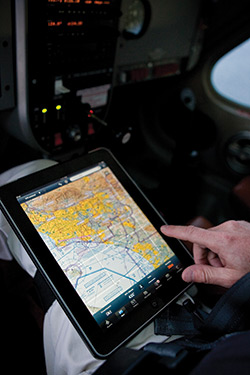 Any device with a 9.7-inch backlit screen that relies on a practically unlimited variety of third-party software applications is going to be useful in an airplane. Apple makes the offer even sweeter by offering a lightweight tool (1.5 pounds); a battery life approaching 10 hours; and a storage capacity ranging between 16 GB and 64 GB of data, depending on the model.
Any device with a 9.7-inch backlit screen that relies on a practically unlimited variety of third-party software applications is going to be useful in an airplane. Apple makes the offer even sweeter by offering a lightweight tool (1.5 pounds); a battery life approaching 10 hours; and a storage capacity ranging between 16 GB and 64 GB of data, depending on the model.
Buying the right model is the first hurdle. The 16-GB base version sells for $499 and is capable of picking up Wifi signals. But don’t be tempted to go low here. Buy the $629 model 16 with GB, Wifi, and 3G cellular network instead. Even if you don’t activate the 3G connectivity option, you need this model because it has assisted GPS installed. They call it assisted GPS because it’s not as good as a dedicated GPS chip, but it does a respectable job of telling you where you are. On the memory question, even the base 16-GB model is enough for an entire nation’s worth of charts and approach plates.
And charts are what the iPad does best (see “ Application Nation,” below). Sectional charts, IFR charts, and approach plates all look fantastic on the display. They can be shown in either portrait or landscape mode, and the iPad’s pinch-to-zoom capability means that moving them around the screen is as simple as pointing your finger to where you want to go. It’s an astounding user interface that works without hiccup or delay in most applications.
If the iPad were just a chart viewer, it wouldn’t be worth the expense. The ability to run applications for flight planning, weather, checklists, training courses, and practically anything else you can imagine is what makes it a good buy. Many of these applications are free, or cost just a few dollars. The most expensive is around $100, which is a bargain. Even though an excellent application exists in almost every category, however, the iPad still isn’t a perfect solution to any of these needs.
The first obstacle that must be overcome is the tablet’s size. It doesn’t sound big, but imagine finding a spot in the cockpit that allows for unobstructed viewing and that also happens to be out of the way. Obviously you can toss it on the seat next to you. There are also yoke mounts and kneeboards currently available. The yoke mount seems absurd, but some pilots report having success with it. Just search for “iPad yoke mount” on the Internet and you’ll see the obvious problem. Some of the kneeboards are very well built and clever, but each of them has the same limitation—the thing is stuck to your leg. That’s fine if you like having your charts and GPS in that location, but most of us want it up higher where we can see it.
Each kneeboard offers a different solution to the problem. The iPad Kneeboard Pro ($189) from MyGoFlight.com is a hard metal case with a metal clipboard that can either sit on the outside or on the inside flap once it’s opened. It’s basically a lap desk that can protect the iPad when it’s not in use. We’ve also tested the kneeboard from New Sky Products ($69.95). While basic in design, the beauty of this particular kneeboard is its molded plastic case that wraps around your leg. It’s very comfortable. Sporty’s is selling a kneeboard for $39.95 that wasn’t yet available for testing. These are just a few of the many options.
The next problem is sunlight readability. Although the iPad is better than most computers in sunlight, it still has considerable glare issues in a bright cockpit. Anti-glare coatings are available, which users report having success with, but it’s just another thing to deal with.
Finally, there are the issues of heat and altitude. Apple lists the device as having an altitude limitation of 10,000 feet, although there’s no clear indication why. It features a hard drive that isn’t prone to altitude issues. The lack of dense air to cool the device is one potential explanation. And heat is an issue for the iPad in general. Its operating limits are 32 degrees Fahrenheit to 95 degrees, both of which are easily exceeded in the cockpit.
Between the various limitations and the size, it’s easy to understand why the iPad isn’t the perfect cockpit device we want it to be. But beyond that, one thing about the iPad is clear: Since it was designed to be everything to everyone, it doesn’t do a masterful job at anything. A standalone GPS serves as a better moving map, paper charts are more readable and don’t crash, and incredible flight planning products already exist—for free. But if you’re the type of pilot who wants everything in one small, tidy package, the iPad will serve as a strong backup to your GPS, and another redundant source for charts.
What puts the iPad over the top as a must-buy gadget is, ironically, its use outside of aviation. If you’re going on a weekend trip in the airplane, having an iPad means no longer having to pack your laptop, your books and magazines, or a GPS for the rental car. For that reason alone, it is worth the cost.
E-mail the author at [email protected].
Application nation
With more than 130 aviation applications available, the choices for pilots really are overwhelming. The “apps” range from comprehensive packages of planning, weather, charts, and airport directory to more basic, task-specific offerings. Here are a few of our favorites.
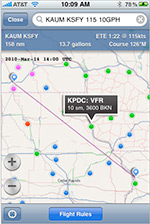 Foreflight—For those who haven’t had the privilege of using Foreflight, you’re missing out. The program is a full suite of aviation information. You can plan a flight, file a flight plan, get weather, and then take the iPad with you in the cockpit and use Foreflight as a moving map. As an added bonus, Foreflight now works with a Bluetooth GPS, meaning the moving-map capability is greatly improved. Foreflight developed AOPA’s Airports iPhone and iPad Touch applications, which include all the directory information in an easy-to-use interface, that is free to members. $74.99 a year.
Foreflight—For those who haven’t had the privilege of using Foreflight, you’re missing out. The program is a full suite of aviation information. You can plan a flight, file a flight plan, get weather, and then take the iPad with you in the cockpit and use Foreflight as a moving map. As an added bonus, Foreflight now works with a Bluetooth GPS, meaning the moving-map capability is greatly improved. Foreflight developed AOPA’s Airports iPhone and iPad Touch applications, which include all the directory information in an easy-to-use interface, that is free to members. $74.99 a year.
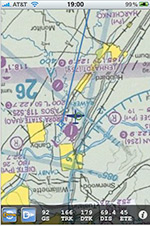
Sky Charts Pro—Turn the iPad into a moving map GPS for twenty bucks. Sky Charts Pro has basic, yet sometimes tedious, flight planning, and a suite of moving-map charts and approach plates for a cheap price.$19.99 for a year of chart updates.
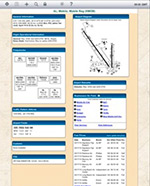
Flight Guide iEFB—Pilots who rely on Airguide Publications’ Flight Guide will love the electronic version. It mimics the book in many ways, with the addition of fuel prices as a bonus. A full directory and charts are available as part of the Pro package. Fantastic chart resolution is one big selling point. $19.99 for the Pro version.
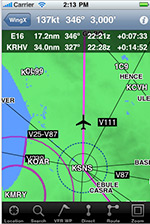
WingX—Hilton Software’s WingX was an early innovator in the smartphone market, and is a strong product on the iPad. An easy and quick user interface is a big selling points. The split-screen view is also useful and unique. $99 a year.
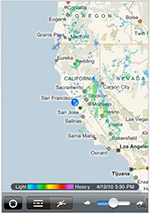
MyRadar—Want a quick way to see radar returns? MyRadar is quick and easy to use. There’s not much more you could want. Free.
 DUAT—DTC recently released an iPhone application, which also works on the iPad. Although not yet optimized for the iPad, the application still looks really good and gives full official briefings, weather maps, flight planning, and approach plates in one package. Aeronautical charts are also in the works. Free.
DUAT—DTC recently released an iPhone application, which also works on the iPad. Although not yet optimized for the iPad, the application still looks really good and gives full official briefings, weather maps, flight planning, and approach plates in one package. Aeronautical charts are also in the works. Free.


